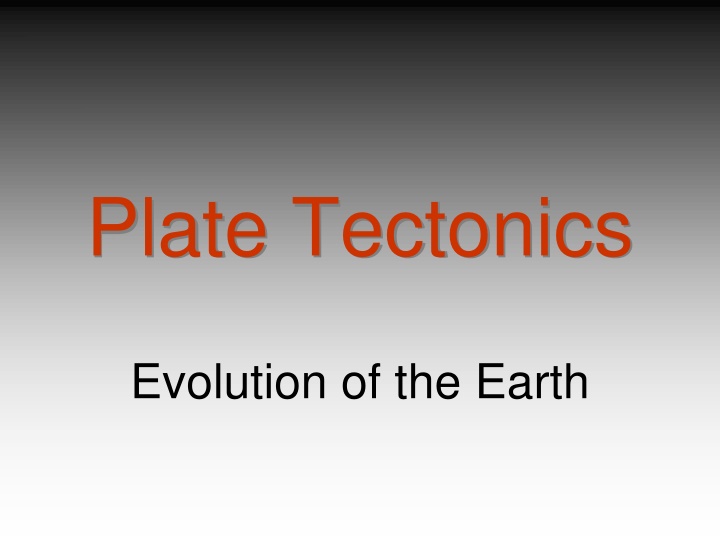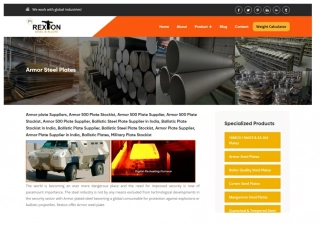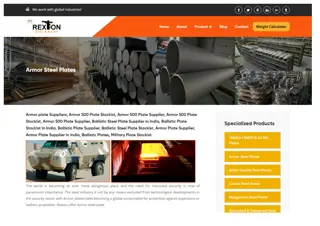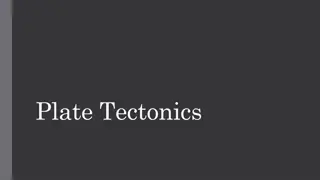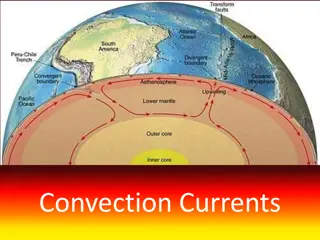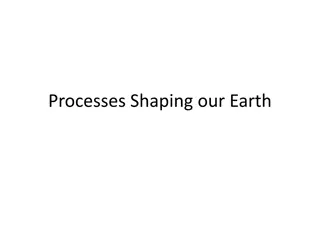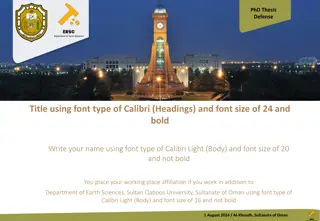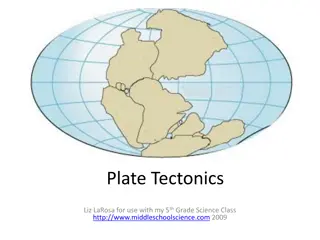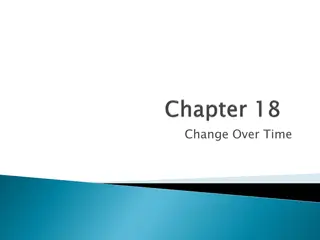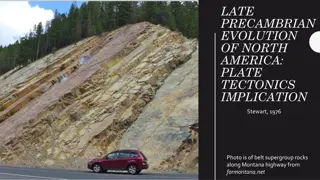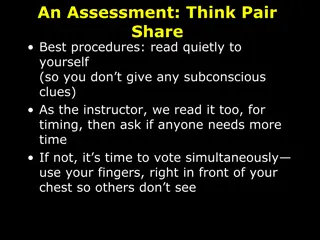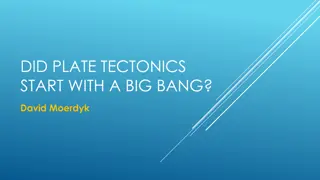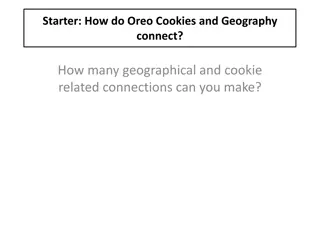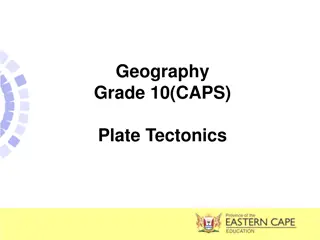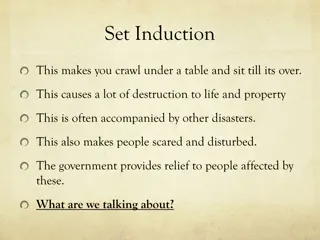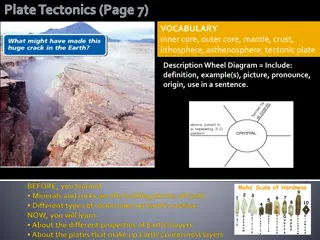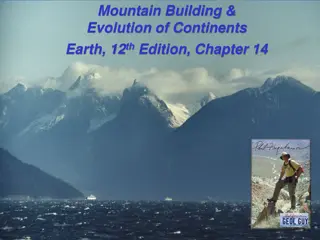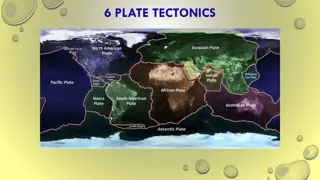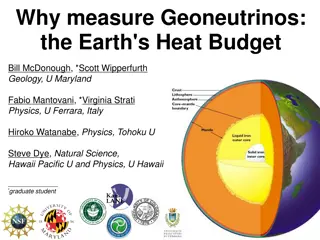Plate Tectonics: Evolution of the Earth
Explore the dynamic process of plate tectonics shaping the Earth's crust through the movement of tectonic plates, subduction zones, divergent and convergent boundaries. Discover how seafloor spreading creates new oceanic crust, and learn about the geological features formed by these processes.
Download Presentation

Please find below an Image/Link to download the presentation.
The content on the website is provided AS IS for your information and personal use only. It may not be sold, licensed, or shared on other websites without obtaining consent from the author.If you encounter any issues during the download, it is possible that the publisher has removed the file from their server.
You are allowed to download the files provided on this website for personal or commercial use, subject to the condition that they are used lawfully. All files are the property of their respective owners.
The content on the website is provided AS IS for your information and personal use only. It may not be sold, licensed, or shared on other websites without obtaining consent from the author.
E N D
Presentation Transcript
Plate Tectonics Evolution of the Earth
Cracks in the Earths Crust The crust, when it is solid, acts as a heat insulator for the hot interior of the Earth. The molten material in the mantle, magma, below the crust builds up tremendous heat and pressure. The magma creates convection currents and rises to the surface. These currents can crack the crust (both oceanic and continental)!
Tectonic Plates These cracks separate the crust into plates (huge sections of the Earth that moves relative to each other). Lithosphere is responsible for tectonic plates because it adheres the crust to the mantle.
Plate Boundaries Convergent Boundaries Subduction when one oceanic plate plunges beneath another Crust enters mantle, pressure cracks crust Volcanoes Ocean trenches Continental Collision - continental plates move toward one another The crust moves upward, folds and buckles and breaks mountains Divergent Boundaries plates move away from each other Seafloor spreading Mid-ocean ridges Transform fault plate moves sideways from each other, slide past each other earthquakes
Seafloor Spreading Magma rises to the oceanic crustal surface forms mid ocean ridges. As the lava cools, it forms new seafloor and features: rift valleys; seamounts; abyssal hills (volcanic peaks) As new material reaches the surface, the plates are pushed apart
Seafloor Spreading cont. Earth s longest mountain chain 47,000 miles long running down the middle of the Atlantic Ocean (surfacing at Iceland), around Africa, through the Indian Ocean, between Australia and Antarctica, and north through the Pacific Ocean. Running along the top of this chain of mountains is a deep crack, called a rift valley. It is here that new ocean floor is continuously created. As the two sides of the mountain move away from each other, magma wells up from the Earth's interior. It then solidifies into rock as it is cooled by the sea, creating new ocean floor. The mapping of the seafloor also revealed that these huge underwater mountain ranges have a deep trench which bisects the length of the ridges and in places is more than 2000 meters deep. Seismic studies show that the mid-oceanic ridges experience an elevated number of earthquakes. All these observations indicate intense geological activity at the mid- oceanic ridges. The speed at which new ocean floor is created varies from one location on the ocean ridge to another. Between North America and Europe, the rate is about 2.2 inches/year At the East Pacific rise, which is pushing a plate into the west coast of South America, the rate is 12.6 inches/year
Transform Plates San Andreas Fault
Why do the Plates Move? No single idea explains everything but we can identify several forces that contribute to the movement of the plates. Slab pull The sinking of the cooled dense oceanic plates pulls on the rest of the plate Ridge rises The material deposited on the top of the ridge slides downs from the rise pushing on the plate Convection Movement within the mantle could be part of the driving force behind the motion of the plates.
Tectonic Plates Earth s crust is broken into about 19 pieces
Earthquakes Tidal waves or Tsunamis result when a large section of the sea floor suddenly moves and therefore displaces a massive amount of water.
Earthquakes Location of worldwide earthquakes
Tectonic Plates Earthquakes
Tectonic Plates Volcanoes
Pangea What is Pangaea? Pangaea was a super continent at one time. 200 mill years ago, plates shifted enough to cause movement. Scientists use the similarity of rock types and fossil types that date to the same age to support their theory that the continents were connected to form a super continent.
Pangea The break up of Pangea
Where are we going? We appear to be headed for another super continent as North America, South America, Asia and Australia converge in the ever shrinking Pacific Ocean
